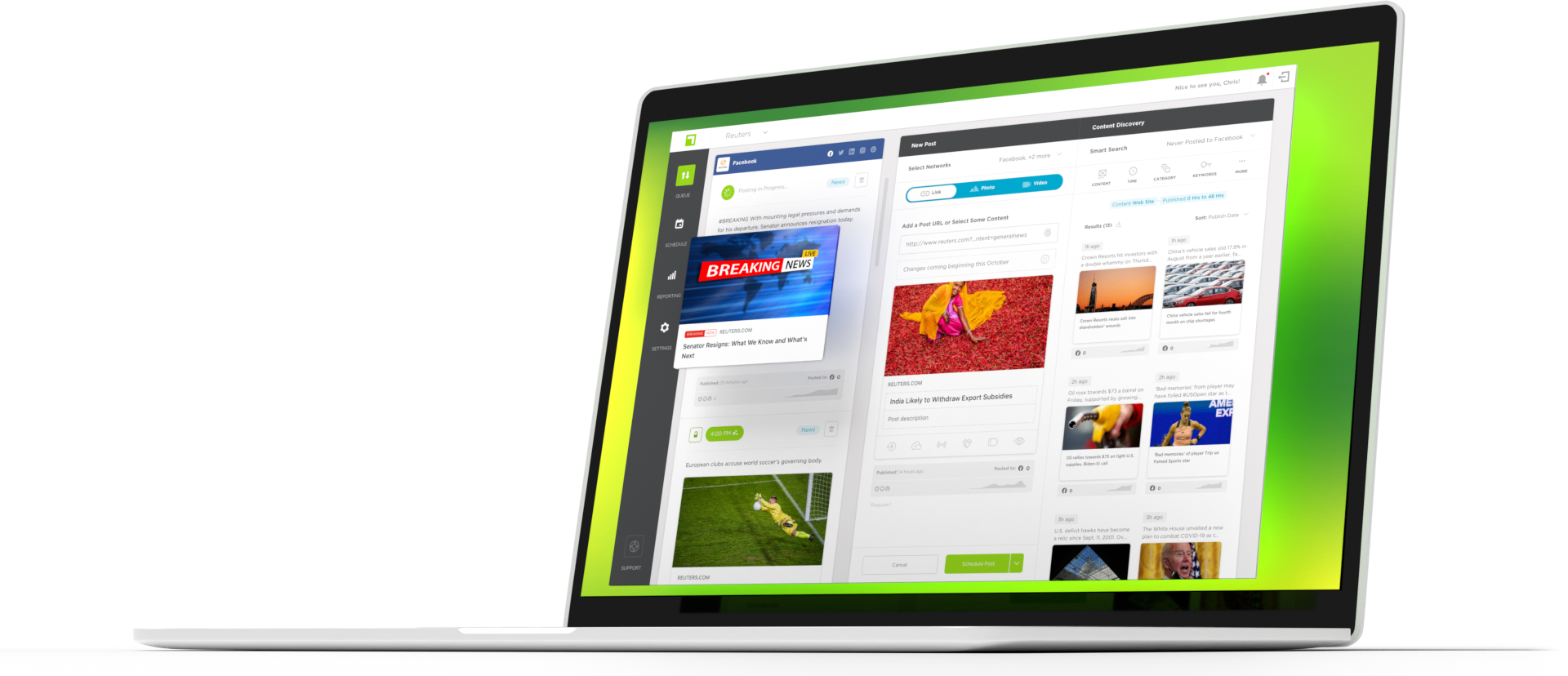Social media has changed how the world communicates with friends, gathers news, and shares experiences. For better or worse, the impact on the world is undeniable. The global social media usage rate is 49% and growing. Social media services have replaced many newspapers, The Yellow Pages, and other institutions – our connectivity depends on it. Social media handles large numbers with nearly unimaginable advertising stats. AI in social media marketing is the key to it all.
Can a single human mind organize all this? There’s no way limited human capacity can process this much data. Social media platforms use invisible algorithms built on Artificial Intelligence to keep up.
What is at stake here?
In short, whenever your company makes a posting decision, there’s room to involve AI.
This includes:
- Determining what your peak posting hours are
- Deciding what should be cross-posted to other platforms and when
- Balancing the correct ratio of images, reshares, and new posts
- Identifying when the public conversation is switching rapidly into new topics or trends.
Get our social media and digital publishing updates straight to your inbox
How is Big Media using AI?
Lately, there has been a lot of media attention on how Meta companies (Facebook, Instagram, and WhatsApp) use AI to gather user data. However, Meta is far from the only one acquiring deep insight into its user’s behaviors, preferences, and possible future desires.
Artificial Intelligence is crucial to keep social media valuable and entertaining. Companies do this by:
- Connecting user behavior with purchasing history
- Identify the visual styles that attract more interactions — Snapchat does this to track which filters work best
- Identifying which members on your extended network can meet the needs of each user (for example, via LinkedIn recruitment searches or on Facebook Marketplace)
- Personalizing the look of ads, shared posts, and branded content, making it more enticing for each user
- Understanding the preferences and interests of each subgroup of users
Two tasks that AI can start taking over for you NOW
1. Schedule your posts efficiently.
Unless you can afford a 24/7 team that never takes a day off (or a constantly rotating pool of social media managers), you must schedule your posts in advance. Technically, this can be done manually using each social media platform’s built-in tools.
However, this places the load squarely on your team’s shoulders, leaving them to determine the correct post frequency, which topics to cover at specific times, and adapt each post to the platform’s tone. These critical decisions require a lot of knowledge, insight, and time.
Instead, you can use AI to make these decisions based on every past interaction you have accumulated. Then, the same AI can implement these decisions or offer suggestions for your human staff whenever there is room for increased efficiency.
2. Track the public’s emotions
Deciding what to post is only half of the battle. You’ll have to figure out how to track the effectiveness and how much you can spend.
Usually, this is measured by examining conversion and click-through rates. However, not all types of clout can be measured through sales – and never is this as accurate as in the publishing industry.
So how can you examine whether your sponsored content is genuinely engaging readers? Or are your long-form articles spurring social change? Emotion AI is a new form of analyzing the reactions and feelings of your readers. It uses AI-powered natural language processing to see what’s on your readers’ minds based on their comments and sharing behavior.
For a social media team, the potential of AI in social media marketing lies in increasing the returns on each dollar spent. Thanks to its ability to make predictions based on mountains of data, an AI can provide the cold direction that spurs an emotional medium forward.
If you would like to know more about getting set up, contact True Anthem. We’ll give you a personalized demo and help you get started.
Sign up for our newsletter to get tips, tricks, social media news, best practices and guidelines to build the best social media strategy.

